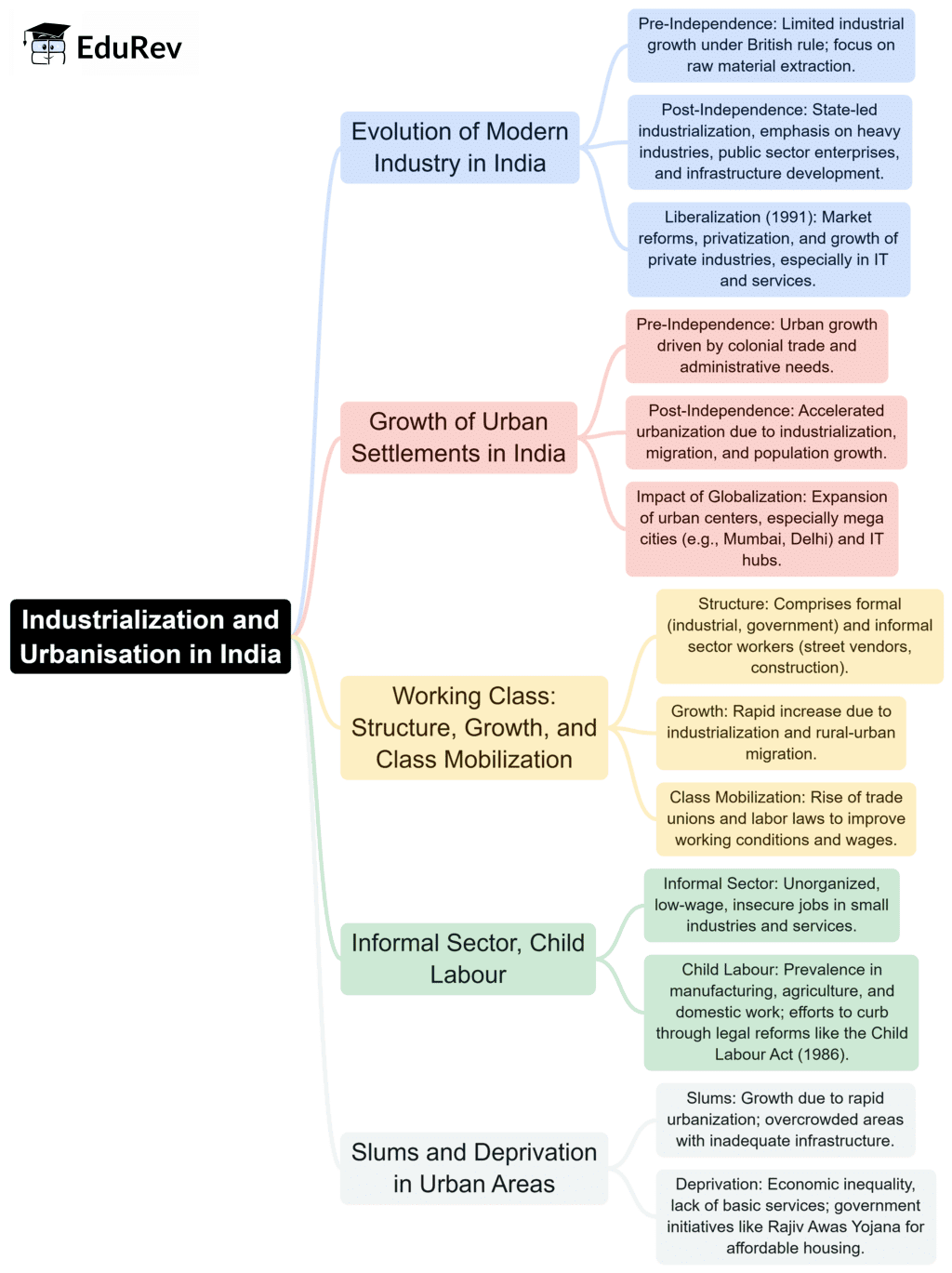UPSC Exam > UPSC Notes > Sociology Optional for UPSC (Notes) > Mind Map: Industrialization and Urbanisation in India
Mind Map: Industrialization and Urbanisation in India | Sociology Optional for UPSC (Notes) PDF Download

The document Mind Map: Industrialization and Urbanisation in India | Sociology Optional for UPSC (Notes) is a part of the UPSC Course Sociology Optional for UPSC (Notes).
All you need of UPSC at this link: UPSC
|
120 videos|427 docs
|
FAQs on Mind Map: Industrialization and Urbanisation in India - Sociology Optional for UPSC (Notes)
| 1. What are the key factors that led to industrialization in India? |  |
Ans. The key factors that led to industrialization in India include the British colonial policies that promoted certain industries, the availability of raw materials, the establishment of railways and communication networks, the growth of a labor force, and the influx of foreign investments. Additionally, post-independence policies aimed at self-sufficiency and economic growth further accelerated industrial development.
| 2. How did urbanization impact Indian society during the industrialization period? |  |
Ans. Urbanization during the industrialization period in India significantly impacted society by leading to the growth of cities, changes in social structures, and the emergence of new economic opportunities. It resulted in rural-to-urban migration, altered family dynamics, increased population density in urban areas, and the development of slums, while also fostering cultural exchange and diversity.
| 3. What were the environmental consequences of industrialization and urbanization in India? |  |
Ans. The environmental consequences of industrialization and urbanization in India include pollution of air and water bodies, loss of biodiversity, deforestation, and degradation of land. Rapid industrial growth has often resulted in inadequate waste management and increased emissions, leading to significant health risks for the urban population and long-term ecological damage.
| 4. What role did government policies play in shaping industrialization and urbanization in India? |  |
Ans. Government policies played a crucial role in shaping both industrialization and urbanization in India. Policies promoting public sector enterprises, investment in infrastructure, and economic liberalization in the 1990s facilitated industrial growth. Urban planning initiatives aimed at managing urbanization and addressing housing shortages also reflected the government's commitment to improving living conditions in cities.
| 5. How has globalization influenced industrialization and urbanization in India? |  |
Ans. Globalization has significantly influenced industrialization and urbanization in India by opening up markets, attracting foreign direct investment, and facilitating the transfer of technology. It has led to the growth of IT and service sectors, urban economic hubs, and increased competition, which has both spurred economic growth and exacerbated regional disparities in development.
Related Searches
















